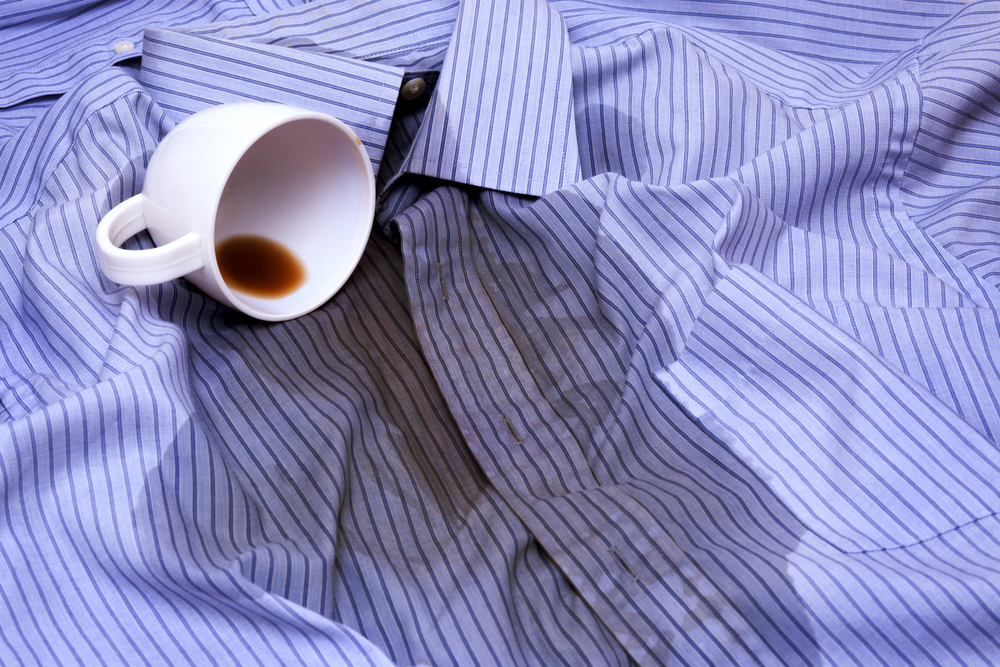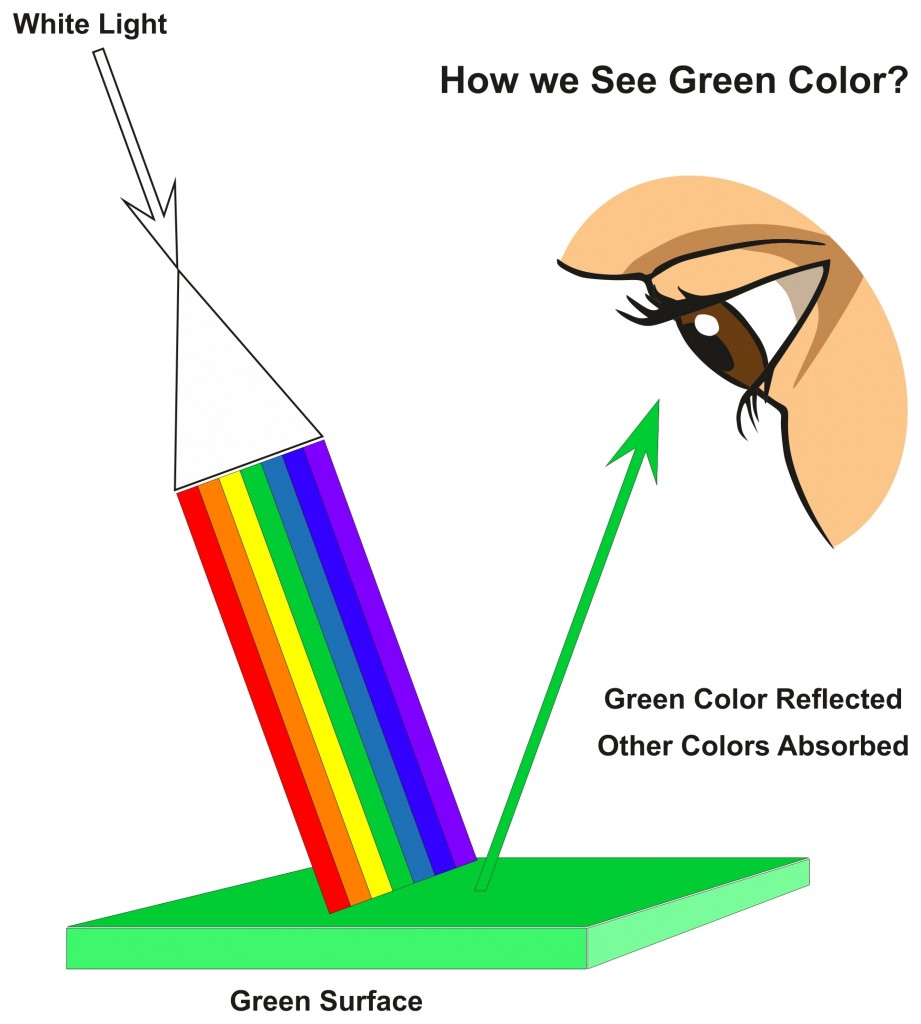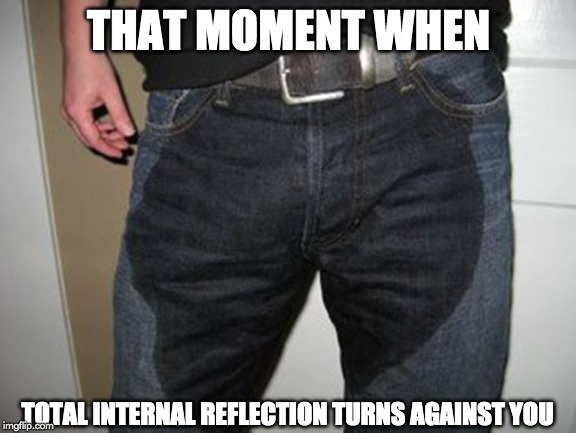Table of Contents (click to expand)
Clothes and fabrics appear darker when they’re wet because less light is reflected back at the observer from the material; water temporarily changes the physical and reflective nature of the material, resulting in the perception of a darker color.
Have you ever spilled water in your lap right before having to present at a big meeting? Or perhaps you’ve felt your underarms start to sweat in the middle of a date that seems to be going well? In both of these situations, and plenty of other ones, you’ve likely noticed that fabrics and cloth tend to darken in color when they get wet! It would certainly be nice if moisture didn’t change the color of our clothes so noticeably, but it’s an unavoidable part of life. The question is, why do things appear darker when they get wet?

How We Perceive Color
Before we can understand the nuances of material colors changing based on the presence of moisture, we should take a quick refresher on how colors are perceived in the first place. When light from the sun streams into our atmosphere and strikes a field of grass, we perceive that grass to be green because the light energy is only partially absorbed.
The grass will absorb wavelengths of light in the blue, red, yellow and orange range of the electromagnetic spectrum, but it will reflect green light wavelengths (560-520nm). Thus, the light that bounces back from the grass is taken in by our eyes, where it hits the cone cells in our retina, and is translated visually to green grass!

This is the case with everything we look at; the diverse range of colors that we perceive in the world, from the color of a tree to the shades of our clothes and the hues of products we buy, is completely dependent on how light is either absorbed or reflected by those objects.
Additionally, the texture and composition of the material can affect how we see color. For example, an article of clothing is composed of many layers of tiny fibers, which provides a lot of surface area for light to be reflected.
Even though a material may be partially transparent, the multiple layers and countless individual fibers reflect the color back at the observer. A white t-shirt, for example, is composed of fibers that are mostly transparent, but in such large numbers and concentrations, they generate a vibrant white color. The interaction of all that fabric, light and air creates the appearance of a solid color to an observer’s eyes.
Also, fabric may feel smooth, but all those fibers make for quite a rough surface on a microscopic level. Rough surfaces tend to look brighter than smooth surfaces, because the incident light has more angles to bounce off, generating more reflection and creating a brighter appearance. Smooth surfaces, like metal or glass, tend to reflect light in a single direction based on the incident light angle.
Also Read: Is Color A Property Of Matter Or Generated In Our Brain?
When Fabrics Get Wet
Now that we understand how light behaves when striking a dry surface, we can examine how things change when a material or surface is wet. Perhaps most importantly, when a material is wet, that additional layer of water acts like a second reflective surface.
Let’s consider a bright red t-shirt for this example. When light strikes the dry t-shirt, all the wavelengths of light are absorbed except for those that appear red (700-635nm), which bounce back to our eyes. If that t-shirt is wet, when light strikes the fabric, it must then pass back through the layer of water on the fabric. The water has filled in all the gaps of the fibers that had previously been filled with air. As a result, the light is more likely to be bent away from the eye by the water. This condition is called total internal reflection, a situation in which the light that would normally bounce back at the observer is instead be re-absorbed by the water.

If fewer photons of light bounce off the fabric and return to your eye, then the material will appear to be “darker” in color. The amount of light being reflected by the material is the same, but less of it is being sent back to your eye. As mentioned above, a smooth surface also reflects light in a different way than a rough surface. Adding water to the rough surface of fabric essentially smooths it out. Depending on your angle of observation in relation to the wet surface and the incident light, you may be able to observe a small, bright reflection of the light. Basically, a wet piece of fabric will be darker than a dry piece of fabric, but it will also have the potential to be more “shiny”.
As the fabric dries, more air returns to the pockets of space between the fibers, allowing the incident light to bounce and reflect more freely, rather than being absorbed or re-reflected by any water present on the material.
Also Read: Why Does The Sun Reflect Off Seas And Oceans?
A Final Word
The interaction of light with our physical world and ocular anatomy is a fascinating study in perspective, optics, light and perception vs reality. In the case of fabric colors under dry and wet conditions, the material doesn’t change color when wet, but instead has its reflective capabilities muted or diverted, giving the appearance of a darker shade to an observer.
How well do you understand the article above!

References (click to expand)
- Why does water make a shirt darker?. West Texas A&M University
- Jae Hyung Lee, Seong Hun Kim, Kwang Ju Lee, Dae Young Lim, & Han Yong Jeon. (2004, March). Determining the Absorption Properties of Split-Type Microfiber Fabrics by Measuring the Change in Color Depth. Textile Research Journal. SAGE Publications.
- Lekner, J., & Dorf, M. C. (1988, April 1). Why some things are darker when wet. Applied Optics. The Optical Society.
